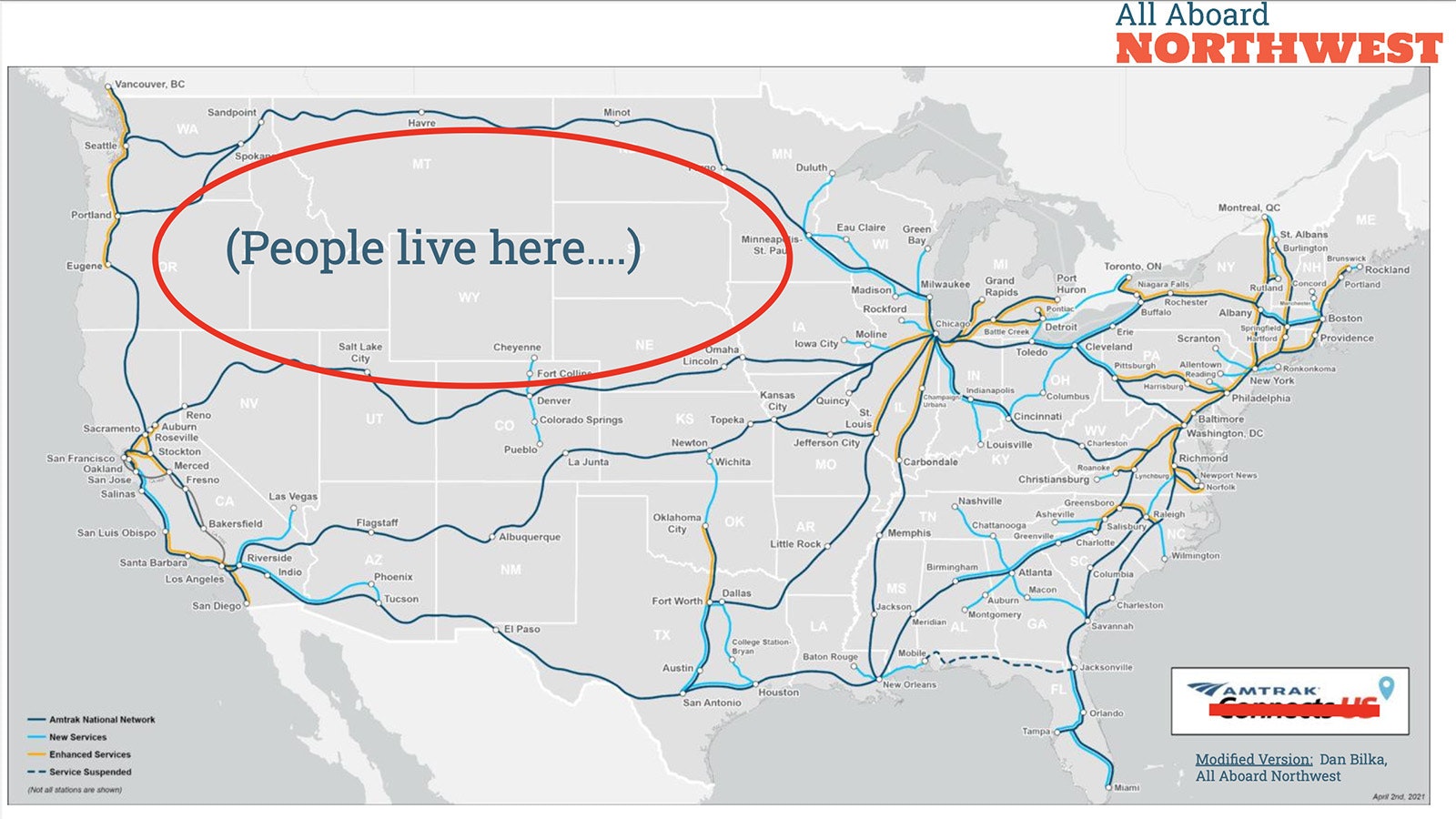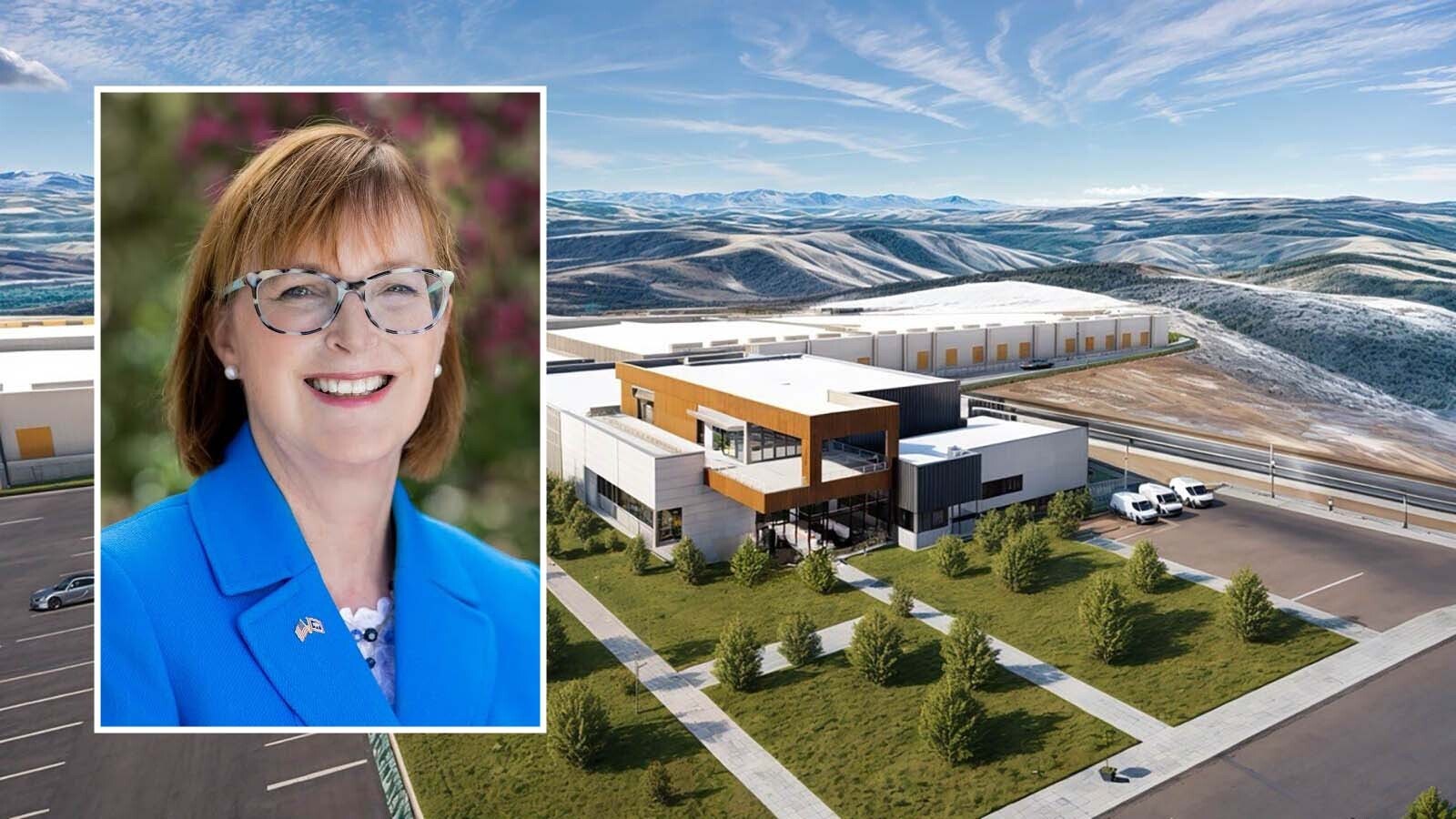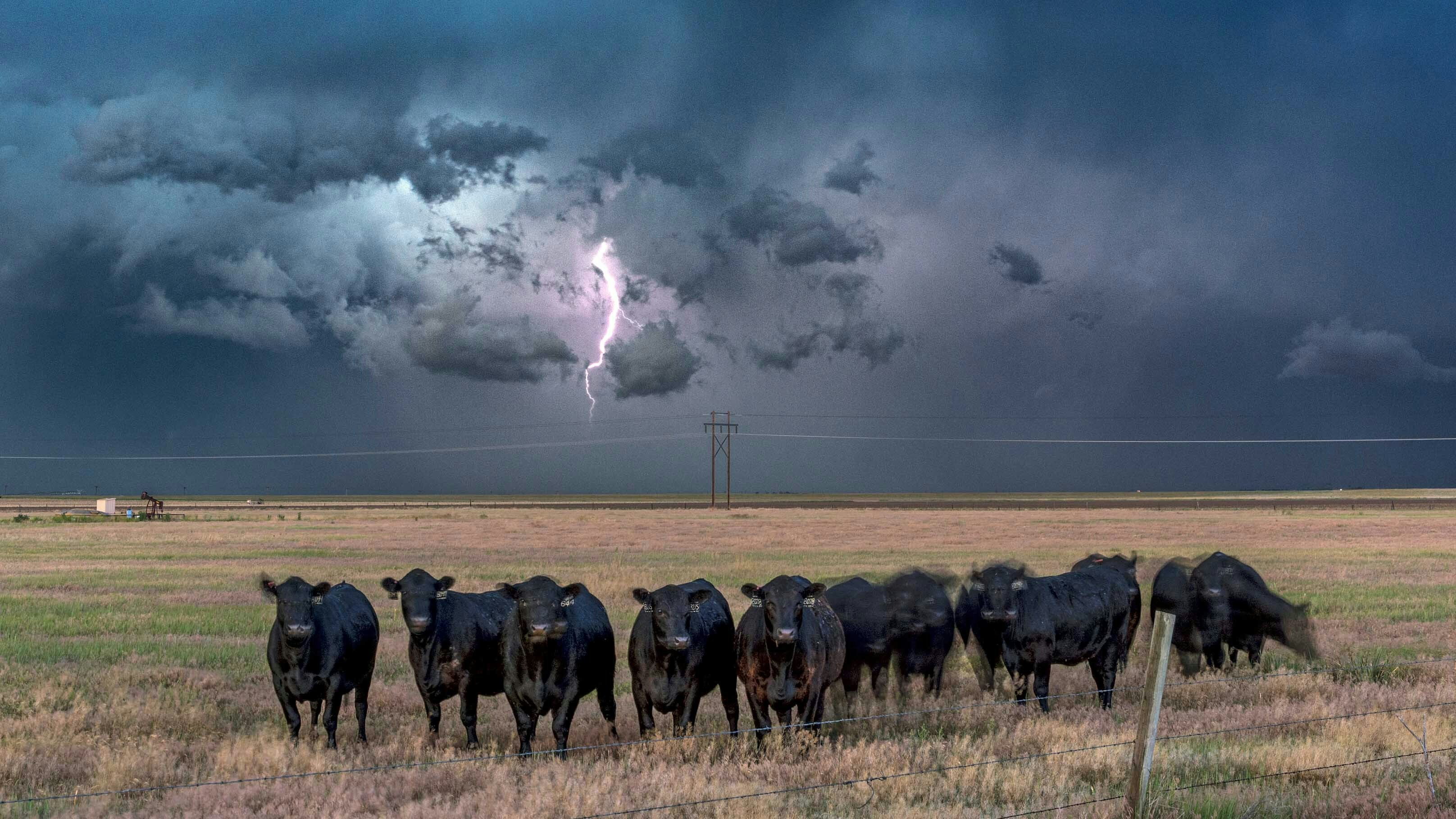Not one, not two, but three passenger rail routes through Wyoming are now on a map for proposed expansion that has been developed by the Federal Railroad Administration, and a public comment session has been opened to collect feedback on the plan.
The new map was announced by advocacy group All Aboard Northwest, which formed in 2022 with the mission of ensuring that Wyoming and other flyover states have an equal voice in proposed uses for the billions of dollars that have been set aside in the bipartisan Infrastructure and Jobs Act for improving rural rail service.
The three routes that appear on the FRA’s preferred new long-distance routes includes 15 new routes on top of Amtrak’s existing network, with three of those routes running through Wyoming. There are none now.
Wyoming’s three routes would include restarting the Interstate 80 corridor that was last served by Amtrak Pioneer in 1997, as well as a new north-south route from Billings to Cheyenne, Denver and beyond, by way of the Wind River Canyon and Casper.
The third route — completely new since the last workshop study was done — would nip and tuck into Wyoming at Cheyenne, before heading north to Rapid City, South Dakota.
Public comments on the draft plan will be taken through March 8 and may be sent to contactus@fralongdistancerailstudy.org.
All Aboard NW President Dan Bilka said the map with new Wyoming routes on it is just a first step when it comes to returning passenger trains to Wyoming.
“We’ll continue making the case for more routes, ultimately, to be included for passenger rail,” he said in an email to Cowboy State Daily. “Sheridan and Gillette, we aren’t giving up on you yet.”
More segments can always be added to the map at a future date, Bilka said.
"Recall that the original 1956 U.S. Interstate Highway Act didn't include key interstate connections we have today," Bilka said. "Congressmen worked to get new segments added by 1958, such as I-29 between Sioux Falls, South Dakota, and Fargo, North Dakota. More segments can ultimately be added to strengthen our national network."

People Do Live Here
So-called “flyover states” like Wyoming have long been given the shaft when it comes to a variety of infrastructure and services, including options for passenger rail.
Bilka has created a map to illustrate the point, and he uses it often in presentations to others about the passenger rail concept, which proposes to repurpose existing freight lines to improve passenger rail service across the country.
His map draws an oblong-shaped donut hole sitting over Wyoming and the surrounding states of Montana, Idaho, Nebraska, as well as nearby North and South Dakota.
In that oblong-shaped donut, Bilka has printed in large letters, “People live here.”
It creates a wry moment with a serious point. It not only shows clearly how a very large area of the West has been completely ignored when it comes to passenger rail service, but it also shows how convoluted travel from one coast to another can get because of that big donut hole sitting in the middle of America.
A Comprehensive, National Approach
Many of the past efforts to address the shortcomings of passenger rail service in flyover states have approached passenger rail improvements piecemeal, trying to start or restart a line one community or one state at a time.
Those types of efforts have been easy for Congress to fend off over the last several decades.
The new effort, however, is taking a comprehensive look at the national picture for passenger rail service, making it possible to build a broader coalition. All Aboard NW is part of that effort, to make the case that fixing passenger rail access in flyover states is also fixing passenger rail service for lots of people across the nation.
There’s $66 billion in the Infrastructure and Jobs Act, Bilka said, which could go a long way to fixing something that’s not just a problem for flyover states, but for everyone.
If the proposed map is fully realized, it will create reasonable access for 89% of the U.S. population to Amtrak trains. That includes 19 million more Americans in some of the nation’s most populous cities, and it includes 13 million Americans who lost Amtrak services due to cuts over the last several decades.
The new map shows 102 new stations in rural communities, which represents twice as much service as before, and it is 112% more access for tribal areas and a 66% increase in service to health-disadvantaged areas, which are defined as areas with poor access to medical facilities and hospitals.
It would also ensure 86% of all U.S. medical centers are served by passenger rail service. And instead of touching 251 congressional districts with Amtrak service, the new routes would touch 431 of the 435 total. That gives nearly every lawmaker in the country a pony in the race.

Demand Curve Higher Per Capita In Rural States
One of the typical arguments against fixing passenger rail services in flyover states has long been the lack of population.
But that doesn’t mean the demand isn’t there, and that’s brings up one of the other slides Bilka loves to show — the demand curve in North Dakota and Montana, where there is outsize demand for passenger rail service, Bilka said.
“Those communities really punch above their weight for ridership,” Bilka said. “And I know the same was true for the Pioneer out through southern Wyoming when it was running, especially when it was running for daily service.”
That line was a critical connection point for people in communities throughout the southern edge of Wyoming, Bilka said, because people in Wyoming need to travel greater distances more frequently, and often in some of the worst winter weather conditions in the United States.
Wyoming’s I-80 corridor from Cheyenne to Rock Springs has been named “The Gauntlet” by many semi-truck drivers who seek to avoid the route if at all possible because of its challenging winter conditions, and the Wyoming Department of Transportation has created a winter science team.
“Given that Wyoming is the only state of the contiguous 48 to be burned twice by the loss of passenger service in the Amtrak era, I personally believe Wyoming, along with never-Amtrak-served South Dakota, should be a top priority to get back on the map with passenger rail services,” Bilka said.
He is urging Wyomingites who want to see passenger rail service return to the Cowboy State to contact the Federal Railroad Administration, the Wyoming Congressional delegation, and state leaders to voice their support.
Renée Jean can be reached at renee@cowboystatedaily.com.





